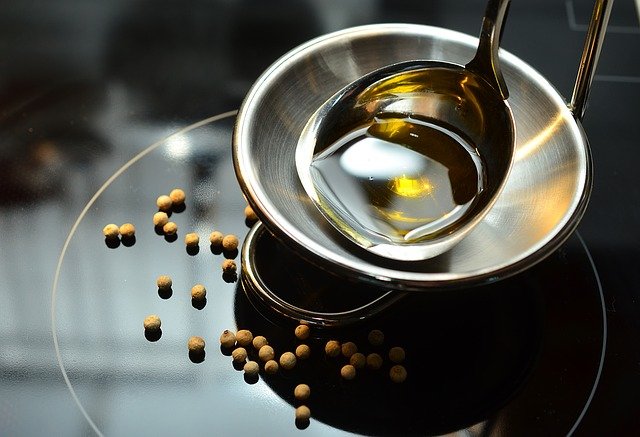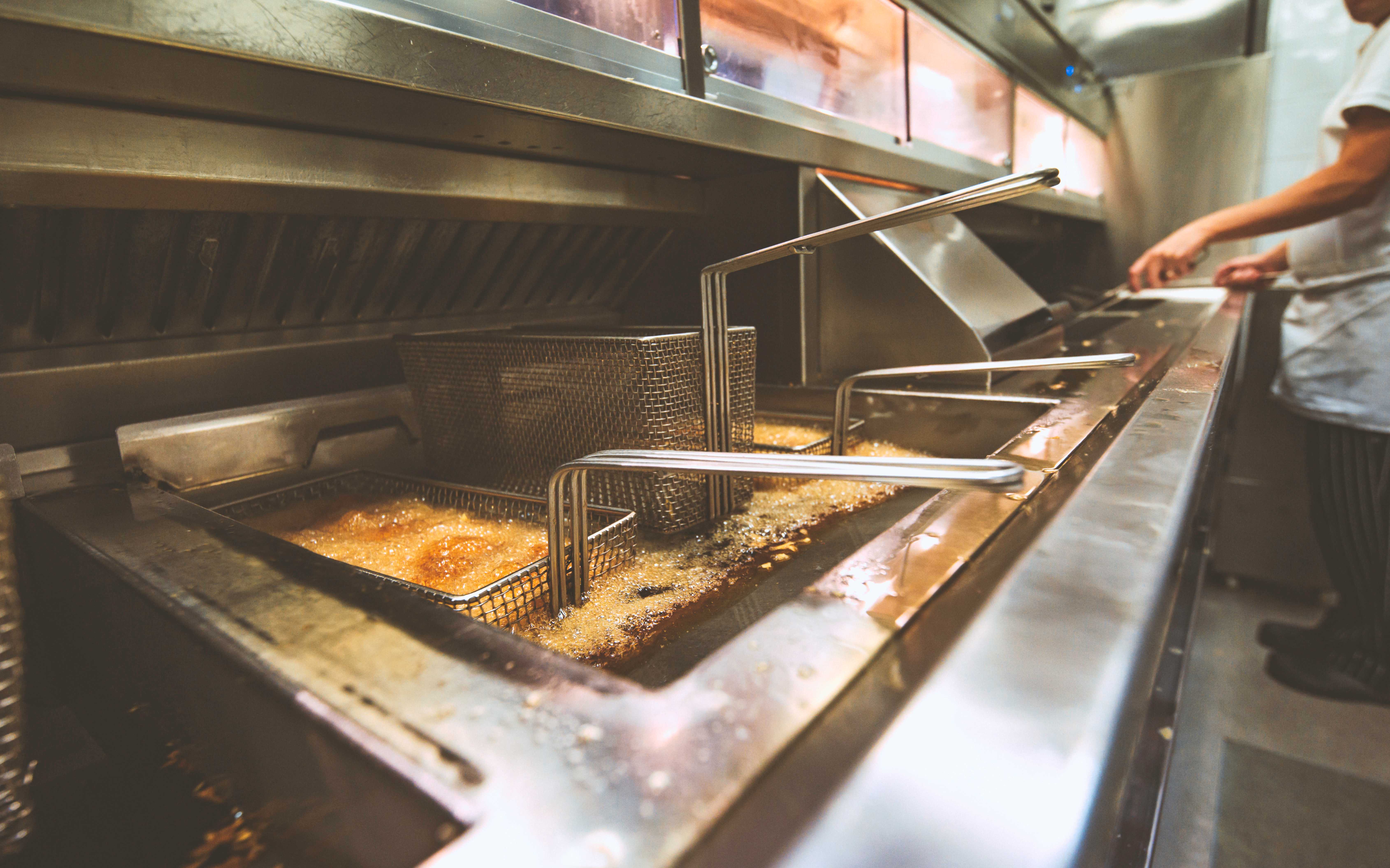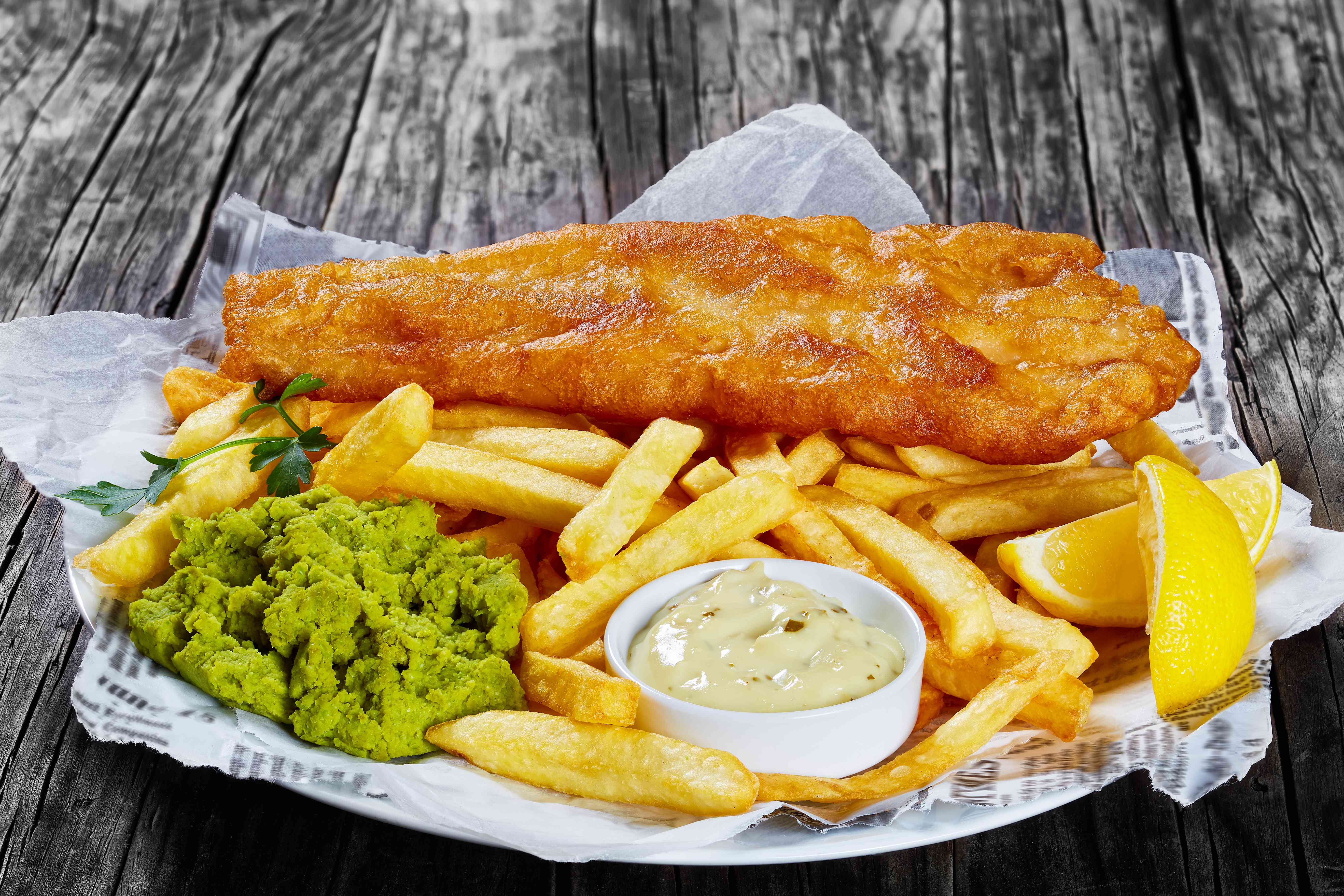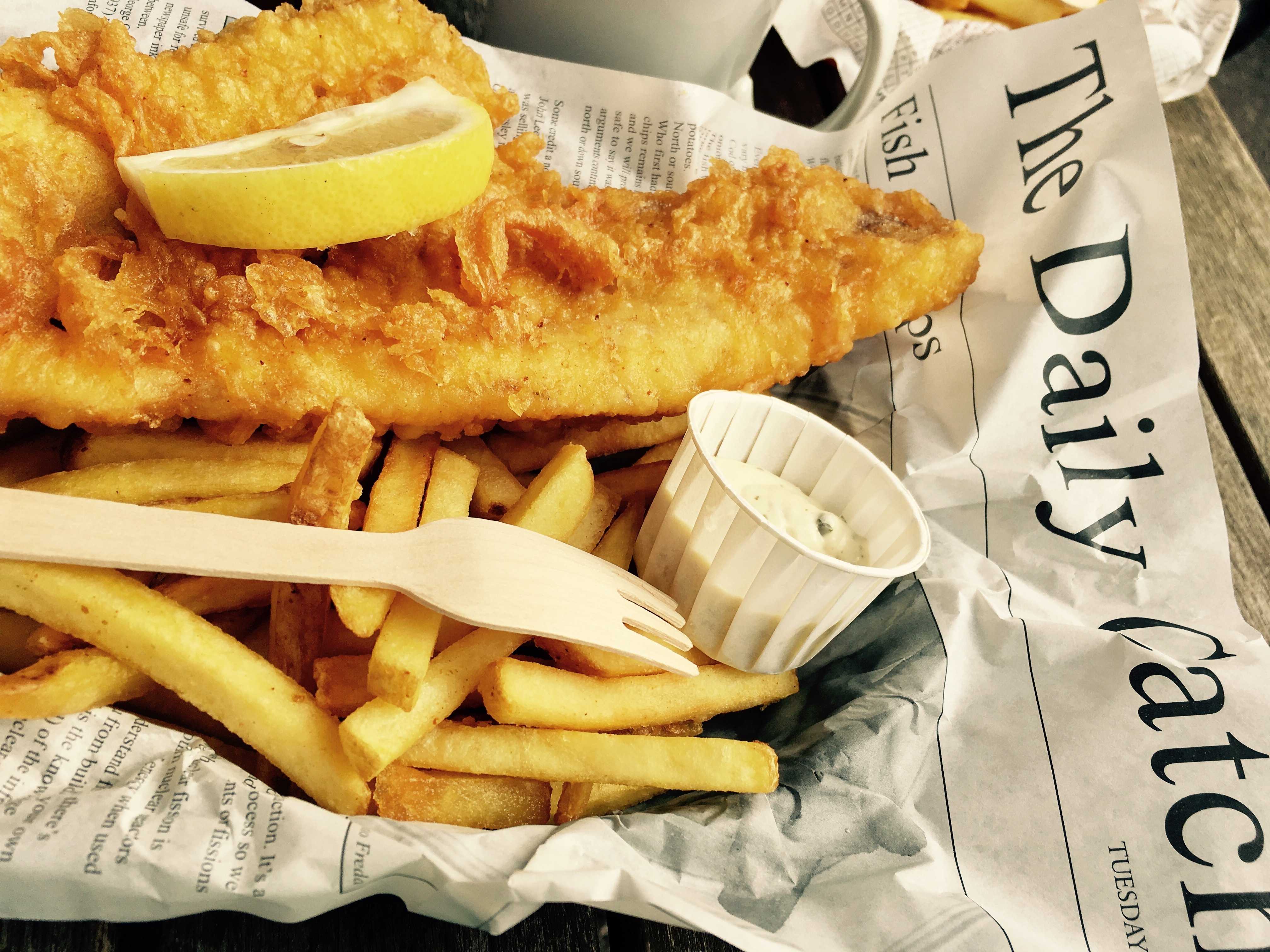When frying, deep frying or sauteing, maintaining the perfect cooking temperature is essential. It’s the difference between golden, crispy goodness and unhealthy, bitter char, and it can make or break your meal. So, to cook well with oil, it’s essential to know what a smoke point is, how it’s different for different types of oil, and how it impacts the taste and nutritional quality of your food.
What is a smoke point?
A smoke point is the temperature at which an oil stops shimmering and starts smoking in a pan. This is actually before the oil’s boiling point. The smoke point is different for different types of oils and fats, and is linked to how the oil is made, the components in the oil itself, and what the oil is made from.
Now, smoking oil is not always a bad thing. For example, you may want a pan to be smoking hot to sear off a steak or get those beautiful char lines on asparagus, but it’s certainly not a technique you’ll use very often. In fact, you’ll usually want to keep your oil below the smoke point because this high temperature changes the chemical nature of the oil, breaking down the fats, releasing acrolein and other harmful compounds, and becoming bitter.
A good rule of thumb is that the higher the smoke point of the oil, the more cooking methods you can use it for. For example, butter has a very low smoke point, so it’s limited to lower and medium-temperature cooking. If you go much higher, it’s going to turn brown and bitter quickly. Palm oil, however, has a much higher smoke point, so you can use it easily for high-temperature flash frying.
It’s also very dangerous to work with smoking oil. Not only can it flood your home with smoke that burns your eyes and leaves a bad smell through your home, but it can also flare up and catch fire. This is incredibly dangerous if you heat up oil for deep frying, so it’s very important to keep an eye on the oil temperature and know the smoke point for the oil you are using. It’s also why you work with a very small amount of oil when you are searing meat or vegetables.
What are the factors that affect the smoking point?
So, we know that different oils and fats have different smoke points, but why is this the case? Here’s what affects the smoking point of common cooking oils.
- Refinement – Depending on the manufacturer and the final product, cooking oils and fats can be refined to different levels of purity. The refining process is a kind of filtering process that removes impurities and free fatty acids that cause oil to start smoking, so it helps by pushing the smoke point to a higher temperature. However, many unrefined, more raw oils have a higher amount of minerals, nutrients, and enzymes, which you don’t want to lose by overheating the oil.
- Flavour – Low smoke point oils will change flavour at a lower temperature, so it’s best to save more flavourful types of oil for low heat or no heat cooking. For example, unrefined olive oil, walnut oil, and pumpkin seed oil are best left to salads and drizzling over cooked food. Higher smoke point oils will keep their flavour even at higher temperatures closer to their smoke point, which is why you can use peanut oil to give your stir-fry a lovely Asian flavour.
- Age – The older a cooking oil is, the lower it’s smoke point can drop. That’s because being used and exposed to air, light, and temperature fluctuations changes the chemistry of the oil. It can also increase the likelihood of impurities getting into the oil from the container breaking down, from dust and particles in the air, and cross contamination from cooking use.
- Fat type – The more polyunsaturated fats in an oil, the lower it’s smoke point. Monounsaturated fats have a mid-range smoke point, and cooking oils with saturated fats have a higher range smoke point.
Cooking oil smoke point index
Here’s a helpful index of popular types of oils and their smoke point to help you choose the right oil for every dish and cooking method!
| Types of Oil | Smoke Point of Oil |
| Rice Bran Oil | 260°C |
| Refined Olive Oil | 240°C |
| Palm Oil | 235°C |
| Sunflower Oil | 230°C |
| Peanut Oil | 230°C |
| Clarified Butter | 230°C |
| Almond Oil | 221°C |
| Vegetable Oil | 205-230°C |
| Beef Tallow | 205°C |
| Canola Oil and Rapeseed Oil | 204°C |
| Grapeseed Oil | 195°C |
| Lard | 185°C |
| Avocado Oil (Virgin) | 190-205°C |
| Chicken Fat | 190°C |
| Duck Fat | 190°C |
| Vegetable Shortening | 180°C |
| Sesame Oil | 175-210°C |
| Butter | 175°C |
| Coconut Oil | 175°C |
| Extra-Virgin Olive Oil | 165-190°C |
| Pumpkin Seed Oil | 160°C |
Oil smoke and health
Oil that starts to smoke undergoes a chemical change that not only affects the flavour of the oil, but also affects the nutritional quality of the food cooked in it. This is because free fatty acids break down at this temperature, releasing free radicals and harmful compounds through a process called oxidation. Food cooked in smoking oil can also burn easily, destroying the nutritional value of the product. For cooking oils with polyunsaturated fats, heating it up to smoking temperature causes the formation of carcinogenic compounds, which are linked to cancer risks. Even the fumes have been found to be carcinogenic because of the harmful compounds it contains.
This is worsened every time you reheat and reuse the oil, which is why it’s important to never use deep frying or high heat oil more than once. Remember, even neutral flavour oils will become bitter and filled with harmful compounds when they are heated to the smoke point.
Oil smoke point and flavour
There are so many different flavours that come from oil, from green, fresh extra virgin olive oil and creamy melted butter to neutral flavour oils that crisp and enhance the flavour of food. However, when you heat an oil up to its smoking point, all oils degrade and start releasing a chemical called acrolein. This makes the oil taste bitter and harsh, and can overpower the flavour of your food, making it taste rancid.
Choosing the right oil for different cooking methods
This makes it very important to choose the right oil for each cooking method based on the smoke point, and to use a cooking thermometer to get an accurate reading of how hot your oil is getting. Here’s a quick guide to cooking temperatures to help you out.
- Deep frying – When you’re making fish and chips or deep frying a turkey, you need an oil with a high smoke point. We recommend palm oil, refined peanut oil, or refined avocado oil.
- Searing – To seal in juices and get a nice, browned crust, you’ll also need an oil with a high smoke point that’s heated almost to this temperature. Again, it’s best to use palm oil, refined peanut oil, or refined avocado oil.
- Sauté – If you want to sauté, you’re working with lower cooking temperatures, so you should use a more mid-range or even a low-range oil, like olive oil or even butter – but be careful not to let it smoke and go brown.
- Stir-frying – Stir-frying needs lots of heat but very little oil. We recommend a teaspoon of palm oil, avocado oil, or peanut oil – just enough to lightly coat your food and add plenty of flavour with none of the bitterness.
What oil should I use for seasoning a pan?
Seasoning a cast iron pan, wok, or skillet will make the surface non-stick and help you reduce the amount of oil you need for cooking. It also protects the pan from rust and makes it easier to clean. When you season a pan, you can heat up your oven to 204°C, thoroughly wash and dry your pan, and then place it in the oven for a few minutes to heat up. Then add a coating of grapeseed, avocado, peanut, canola, or neutral flavour palm oil to the pan, coating it well. Leave it on the middle rack for 45 minutes, turn the oven off to let it cool, and then remove the pan. Wipe it dry with a paper towel and store it for use.
Are you looking for sustainable, premium grade frying oil? Choose Frymax! Our sustainably sourced palm oil is relied on by chippies and restaurants across the country to serve up high-quality fried foods. If you’d like to learn more, get in contact with Frymax.
Become a Frymax member today to gain access to exclusive content, expert frying advice and the chance to enter our fantastic competitions.






